![]()
"Lexicon 224"
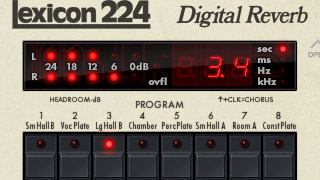
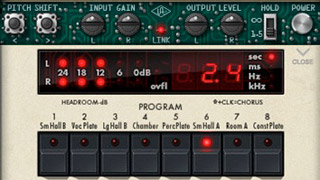
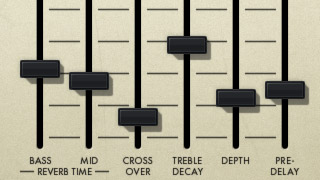
"Lexicon 224 - Studer A800"
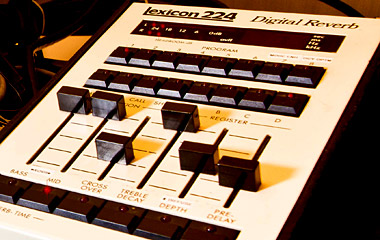
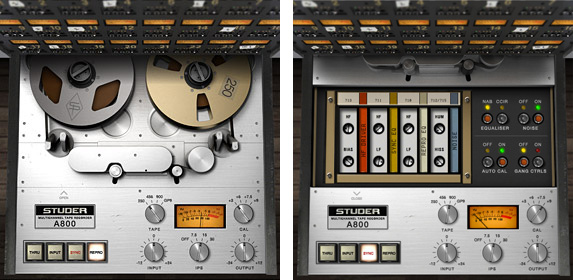
![]()
![]()
![]()
![]()
![]()
![]()
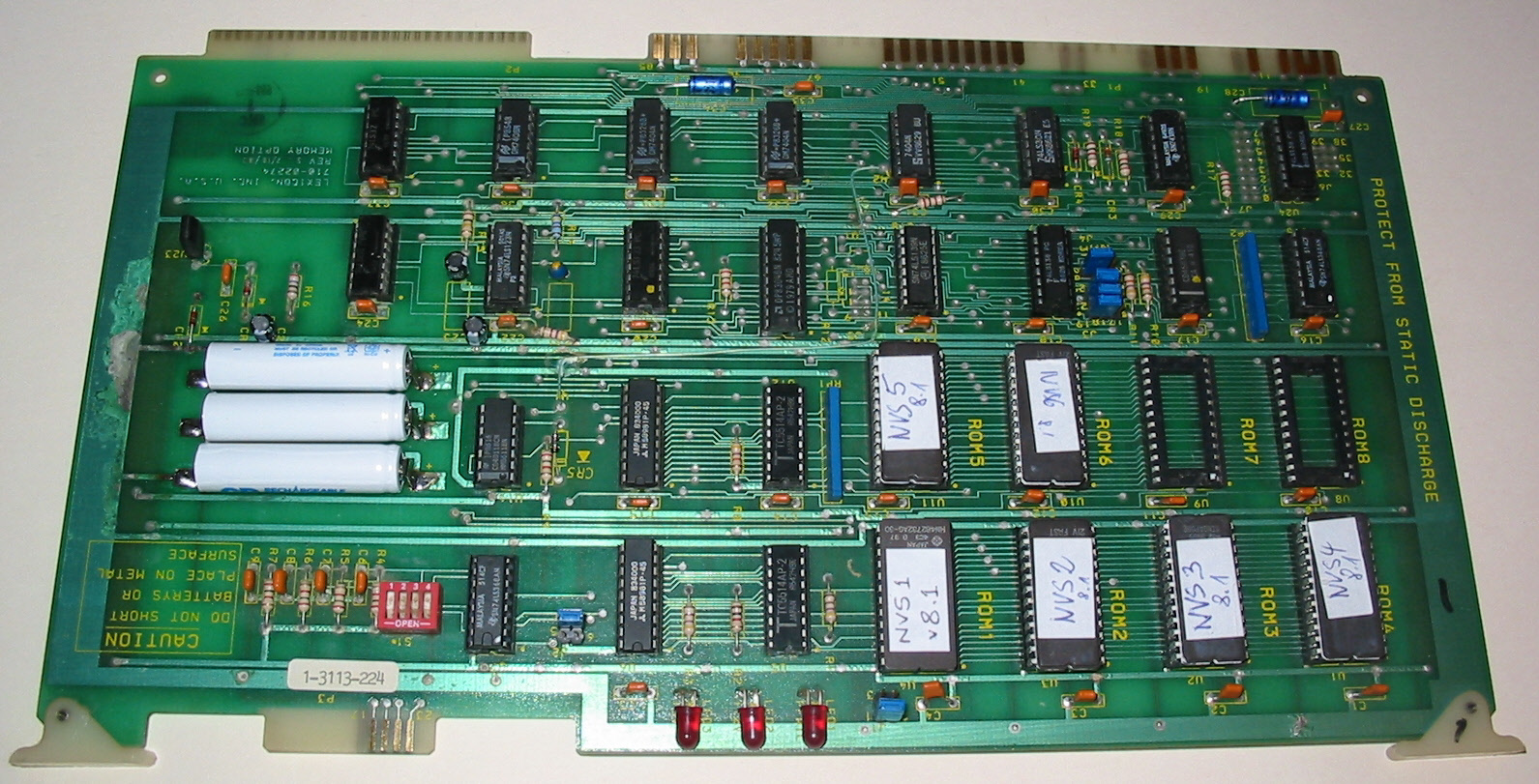
![]()
Lexicon® 224 Digital Reverb Plug-In
From the moment it was unleashed on the audio industry in 1978, the original Lexicon 224 Digital Reverb — with its tactile, slider-based controller and famously lush reverb tail — almost single-handedly defined the sound of an entire era. It served as a major player in the sound of highly influential classics such as Talking Heads' Remain In Light, Grandmaster Flash & The Furious Five's The Message, Vangelis' incredible Blade Runner soundtrack, U2's Unforgettable Fire, and Peter Gabriel's So. With such a refined legacy, it's no surprise that the Lexicon 224 remains one of the most popular digital reverb units of all time.
Lexicon-endorsed plug-in, using the very algorithms from the original hardware
Models entire analog circuit and digital path for total authenticity
8 reverb programs and one chorus program from final Lexicon v.4.4 firmware
Features Artist Presets from famous Lexicon 224 users
Requires a UAD-2 DSP Accelerator Card available from authorized dealers worldwide
The result of using the very same algorithms and control processor code from the original hardware, the UAD-2 Lexicon 224 precisely captures all eight reverb programs and the chorus program — based on the Lexicon 224's final and hard-to-find firmware version 4.4. In UA's exhaustive modeling tradition, the Lexicon 224 plug-in also incorporates the original unit's input transformers and early AD/DA 12-bit gain stepping converters — nailing the entire analog and digital circuit paths right down to the last detail.
Additionally, the Lexicon 224 emulation for UAD-2 features direct input and presets from famous Lexicon 224 users, including Chuck Zwicky (Prince, Jeff Beck), Eli Janney (Jet, Ryan Adams), David Isaac (Eric Clapton, Luther Vandross), E.T. Thorngren (Talking Heads, Bob Marley), and Kevin Killen (U2, Peter Gabriel).
History
Developed by renowned physicist/engineer Dr. David Griesinger, the Lexicon 224
is the most ubiquitous and best-selling studio digital reverb ever made. The
original 224 was a landmark achievement in digital reverb and served as the very
product to put Lexicon on the studio map — and a remote control on every
console. The 224's Concert Hall A program is considered to be one of the finest
reverbs ever made, and its plate programs practically defined the 80's drum
sound.
Parameters
Every tunable parameter from the original is present in the Lexicon 224 plug-in,
and exposed as dedicated controls — inviting easy experimentation and sonic
exploration. All seven algorithms/nine programs are available under the Program
selection. Lexicon’s distinctive Bass/Mid “split decay” adjustments and
Crossover control set the highly tunable reverb image, along with the Treble
Decay for rolling off high frequencies. Depth sets the apparent distance between
source and reverb, while Predelay produces a short delay between the sound
source and the onset of reverberation. Diffusion affects how quickly the echo
density in the reverb builds up over time.
For total authenticity, the UAD-2 only System Noise control enables or disables the inherent dynamic system noise of the original Lexicon 224 hardware. Specifically, disabling System Noise enables a more modern (i.e., cleaner) sound, removing the modeled gain stepping, parameter zippering, and quiescent noise. The unique Lexicon 224 Mode Enhancement and Decay Optimization controls improve reverb clarity. For insert use, the UAD-2 only Dry/Wet and Solo parameters control the effect mix within the plug-in.
Clicking the “OPEN” text to the right of the display panel exposes several hidden controls, including Input/Ouput gain and Pitch Shift, and even a selectable “Bug Fix” mode which enables/disables historical bugs fixes from the Hall B and Chorus programs.
Taken together, the Lexicon 224 emulation for UAD-2 is the world’s most exhaustive and authentic model of a true studio classic.
"Sweetwater.com Review And Summary"
Put Genuine UA Powered Plug-ins to Work in Your DAW!
Plug Universal Audio's amazing UAD-2 QUAD PCIe card into your computer and find
out what your mixes have been missing! This powerful card delivers a collection
of classic-sounding processing plug-ins that truly rival their hardware
counterparts - at a fraction of the cost. You'll be amazed by the UAD-2 QUAD's
Analog Classics collection, which includes spot-on plug-in versions of the
venerable LA-2A audio leveler, 1176LN/SE limiting amps, and Pultec's EQP-1A
program EQ. You also get the outstanding RealVerb Pro room modeler and CS-1
channel strip plug-ins. UAD-2 QUAD gives you all this, plus the awesome DSP
power you need to take the load off your CPU!
The UAD-2 cards take advantage of state-of-the-art chip technology. These SHARC chips boast 32-bit floating-point architecture, for the ultimate in precision and performance. When put to work on premium PCIe cards, such as the UAD-2 Quad, the chips' power potential is truly phenomenal. While the power of each individual UAD-2 card is incredible on its own, you can use cards in tandem to meet the needs of even the most demanding sessions. In all, you can mix and match UAD-2 cards to create a maximum of a 4-card UAD-2 card system.
Using UAD-2 QUAD's LiveTrack mode, you can reduce latency on active UAD-2 plug-ins to the lowest amount possible - ideal for monitoring rich processed audio during the tracking stages. By default, UAD-2 QUAD's LoadLock feature is turned on. This useful tool automatically reserves the maximum DSP load that each UAD-2 plug-in could ever demand - even if you're not using all of its features. This way, you'll be certain you have enough DSP to engage all the features, such as writing automation, later in your mix, without making sonic compromises and pulling plug-ins down the line. If you prefer to manage your DSP resources manually, you can easily disable LoadLock.
In addition to the tremendous plug-in package included with the UAD-2 QUAD, you get a $50 plug-in voucher that you can use toward any of Universal Audio's world-class plug-ins. Recognized as an industry leader in creating dead-on models of the most sought-after vintage gear, Universal Audio offers affordably priced plug-in versions of everything from a Neve channel strip to a Fairchild compressor to the Roland Space Echo - and far, far beyond.
Universal Audio exploited every drop of power technologically possible in designing the UAD-2 cards. Complementing the achievement, they've expanded their power on the sonic front as well. You'll be able to open up your DAW to absolutely stunning plug-ins UA has developed in partnership with top names, such as Manley, Empirical Labs, Neve, Roland, BOSS, EMT, Fairchild, Harrison, Helios, Little Labs, Pultec, SPL, Teletronix, and more. And with the potency packed in these new cards, Universal Audio has positioned themselves to develop entirely new kinds of plug-ins, including instruments and impulse-based reverb effects.
Universal Audio UAD-2 QUAD PCIe Card Features at a Glance:
Flagship quad-processor DSP Accelerator card for UAD powered plug-ins on Mac or PC
Includes Analog Classics plug-in bundle, featuring LA-2A, 1176LN/SE, Pultec EQP-1A, and RealVerb Pro plug-ins
Run complex mix processing in Pro Tools, Logic, Cubase, Nuendo, Digital Performer, and more - without taxing host computer CPU
Free UAD software upgrades, plus access to more plug-ins at UA's online store
High-bandwidth ExpressCard format card, with one Analog Devices SHARC floating-point processor
VST, AU, RTAS support
Compatible with Mac OS X Tiger/Leopard/Snow Leopard and Windows XP/Vista/7
Linkable to existing UAD groups/systems - use up to 4 UAD-2s in one system
Can be combined with UAD-1 cards
Includes $50 voucher for plug-in purchases via UA's online store
1-year limited warranty
Sweetwater.com Lifetime Tech Support.
Lexicon® 224 Digital Reverb Plug-In
Features:
Lexicon-endorsed, using the very algorithms from the original hardware
Models entire analog circuit and digital path for total authenticity
Eight reverb programs and one chorus program from final Lexicon v.4.4 firmware
Features Artist Presets from famous Lexicon 224 users
All of the original parameters maintained including unique Lexicon Bass/Mid
split decay and Mode Enhancement
Plug-in only features such as Dry/Wet Mix and System Noise defeat/enable
Requires a UAD-2 DSP Accelerator Card available from authorized dealers
worldwide
See the UAD Instance Chart here
Product Parameters:
Final and complete v4.4 firmware with the following programs:
1: Small Concert Hall B
2: Vocal Plate
3: Large Concert Hall B
4: Acoustic Chamber
5: Percussion Plate A
6: Small Concert Hall A
7: Room A
8: Constant Density Plate A
Chorus A (shift + click any program button)
Bass — reverb decay of 0.6 to 70 seconds below crossover frequency
Mid — reverb decay of 0.6 to 70 seconds above crossover frequency
Crossover — sets crossover point between Bass and Mid between 100 Hz and 10.9
kHz
Treble Decay — sets the high frequency decay cutoff between 100 Hz and 10.9 kHz
Depth — sets the effective distance between source and reverb with a range of 0 - 71
Predelay — sets delay before onset of reverberation between 0 and 255 ms (actual range determined by selected program)
Reverb Diffusion — sets diffusion amount between 1 and 63
Mode Enhancement — Off/On improves the naturalness of the sound of the 224 reverb programs preventing modes from ringing in the reverb tail
Enhance cycle — sets Mode Enhance range between 1 and 16 (smaller values give a more dramatic effect)
Pitch Shift cycle — secondary Mode Enhance parameter, range between 1 and 16
Decay Optimization — Off/On reduces the coloration in the decay of the 224 reverb programs
Optimize cycle — sets the decay Optimize range between 1 and 16 (smaller values give a more dramatic effect)
Immediate — enables parameter persistence when switching programs
System Noise — Off/On toggles noise components such as AD/DA conversion and gain stepping, parameter zippering and quiescent noise
Rear Outs — switches “A and C” 224 hardware outputs to “B and D” 224 hardware outputs
Dry/Wet Mix — continuously blends between dry signal and effected signal in 1% or 0.1% increments
Wet Solo — overrides Dry/Wet mix control and solos effected signal
Open/Close — allows access to Lexicon 224 hidden parameters:
Input Gain — adjustable input gain from -12 to +12 dB
Output Level — adjustable output level ∞ to +12 dB
Link — links left/right Gain and Level controls for continuously matched
left/right balance
Display Hold — allows user to switch between 1.5 seconds and infinite LED
numerical display hold for last changed parameter
Bug Fixes — Clicking “UA” logo allows the user to enable/disable bugs in the
original Lexicon code found in the Hall B and Chorus programs
Power — enables/disables entire 224 plug-in
Numerical Value Display — three character numeric LED displays current parameter
values for most 224 parameters
LED value display — indicates parameter type associated with Numerical Value Display when applicable
Left/Right LED Metering — six segment LED metering with -24, -18, -12, -6, 0 dB range
Overflow LED — displays processor overflow that may occur with heavy input or certain parameter settings
"UAD-2 Lexicon Program Science And Emulation"
(Overview From Manual, Page 264-265)
Lexicon 224
Classic Digital Reverb
From the moment it was unleashed on the audio industry in 1978, the original
Lexicon 224 Digital Reverb — with its tactile, slider-based controller and
famously lush reverb tail — almost single-handedly defined the sound of an
entire era. It served as a major player in the sound of highly influential
classics such as Talking Heads' Remain In Light, Grandmaster Flash & The Furious
Five's The Message, Vangelis' incredible Blade Runner soundtrack, U2's
Unforgettable Fire, and Peter Gabriel's So. With such a refined legacy, it's no
surprise that the Lexicon 224 remains one of the most popular digital reverb
units of all time.
The result of using the very same algorithms and control processor code from the original hardware, the UAD-2 Lexicon 224 precisely captures all eight reverb programs and the chorus program — based on the Lexicon 224's final and hard-to-find firmware version 4.4. In UA's exhaustive modeling tradition, the Lexicon 224 plug-in also incorporates the original unit's input transformers and early AD/DA 12-bit gain stepping converters — nailing the entire analog and digital circuit paths right down to the last detail.
Additionally, the Lexicon 224 emulation for UAD-2 features direct input and presets from famous Lexicon 224 users, including Chuck Zwicky (Prince, Jeff Beck), Eli Janney (Jet, Ryan Adams), David Isaac (Eric Clapton, Luther Vandross), E.T. Thorngren (Talking Heads, Bob Marley), and Kevin Killen (U2, Peter Gabriel).
History Developed by renowned physicist/engineer Dr. David Griesinger, the Lexicon 224 is the most ubiquitous and best-selling studio digital reverb ever made. The original 224 was a landmark achievement in digital reverb and served as the very product to put Lexicon on the studio map — and a remote control on every console. The 224's Concert Hall A program is considered to be one of the finest reverbs ever made, and its plate programs practically defined the 80's drum sound.
Every tunable parameter from the original is present in the Lexicon 224
plug-in, and exposed as dedicated controls — inviting easy experimentation
and sonic exploration. All seven algorithms/nine programs are available under
the Program selection. Lexicon’s distinctive Bass/Mid “split decay” adjustments
and Crossover control set the highly tunable reverb image, along with
the Treble Decay for rolling off high frequencies. Depth sets the apparent
distance
between source and reverb, while Predelay produces a short delay between
the sound source and the onset of reverberation. Diffusion affects how
quickly the echo density in the reverb builds up over time.
For total authenticity, the UAD-2 only System Noise control enables or disables
the inherent dynamic system noise of the original Lexicon 224 hardware.
Specifically, disabling System Noise enables a more modern (i.e., cleaner) sound, removing the modeled gain stepping, parameter zippering, and quiescent noise. The unique Lexicon 224 Mode Enhancement and Decay Optimization controls improve reverb clarity. For insert use, the UAD-2 only Dry/Wet and Solo parameters control the effect mix within the plug-in. Clicking the “OPEN” text to the right of the display panel exposes several hidden controls, including Input/Ouput gain and Pitch Shift, and even a selectable “Bug Fix” mode which enables/disables historical bugs fixes from the Hall B and Chorus programs.
Taken together, the Lexicon 224 emulation for UAD-2 is the world’s most exhaustive and authentic model of a true studio classic.
Operational Overview Graphical User Interface The original Lexicon 224 consists of two hardware elements. The “mainframe” rack-mountable 4U chassis contains the power supply, circuitry, and audio input/output connectors. The remote control unit has a display, buttons, and sliders which control the 224 parameters and functionality. Some of these buttons and sliders have dual and even triple functionality, which makes using certain “buried” functions a tricky procedure.
The UAD Lexicon 224 interface resembles the appearance and functionality of the original hardware remote control. Operation has been simplified however by reassigning the buried “shift” functions to the buttons that are no longer necessary in a plug-in (such as managing saved programs). Additional parameters are exposed by opening a panel cover.
Lexicon 224
Programs
The original Lexicon 224 hardware has “programs” that are defined by the
firmware ROM (“Read-Only Memory” chip) installed in the unit. A Lexicon
224 “program” is comprised of a unique DSP algorithm and an initial set of
factory parameter values voiced by Lexicon. In modern terminology, these initial
values would be called a “preset.” In Lexicon 224 hardware-speak, a program is
“called” (loaded) which selects the DSP algorithm and sets the default
“recommended” factory parameter values.
These settings can then be modified with the various controls and saved in a user “register” for later recall. The plug-in behaves the same way, except user “registers” are not implemented. Instead, user settings are stored within the session file or they can be saved as a preset for later recall (like all other UAD plug-ins).
Lexicon 224 version 4.4 firmware contains nine programs (the maximum available for the unit), consisting of eight reverb programs and one chorus program. Descriptions of the various programs can be found on page 281.
All visual and aural references to Lexicon products and all use of Lexicon trademarks are being made with written permission from Harman International Industries, Inc.
Click Below For Lexicon 224 Manual, Available Plug-Ins, or Catalog